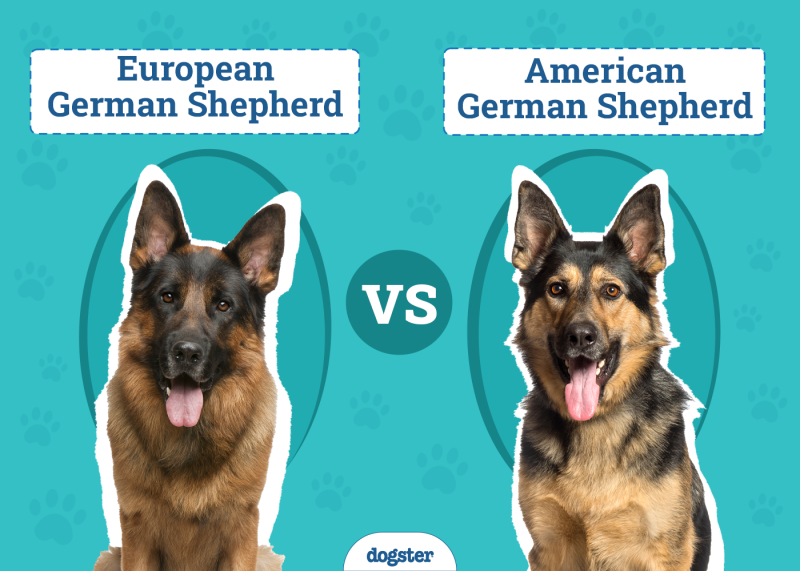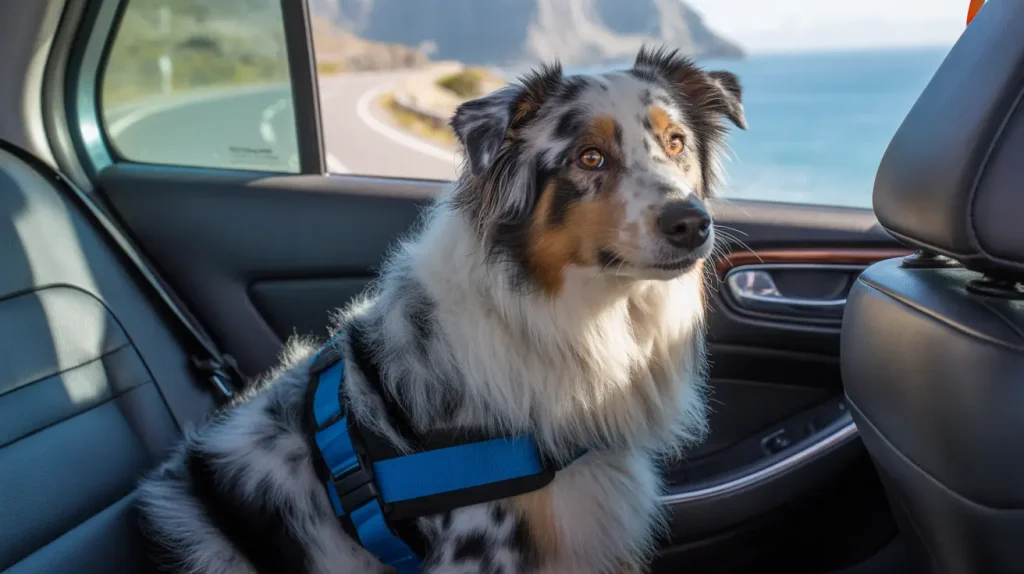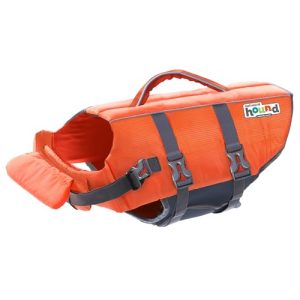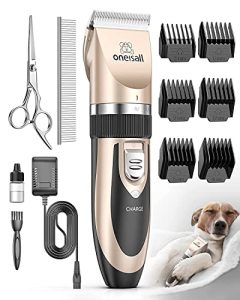Have you ever wondered how safe your dog really is when riding in the car? Every year, countless dogs lose their lives in car accidents, often due to simple mistakes or lack of proper safety measures.
Understanding how many dogs die in car accidents can help you take the right steps to protect your furry friend. You’ll discover eye-opening facts and practical tips that could save your dog’s life on the road. Keep reading—your dog’s safety might depend on what you learn next.

Credit: www.dogster.com
Dog Fatalities In Car Accidents
Car accidents cause many injuries and deaths every year. Dogs are often victims in these crashes. Understanding how many dogs die in car accidents helps raise awareness.
Pet owners should know the risks to keep their dogs safe while traveling. This article covers key facts about dog deaths in road accidents.
Statistics On Canine Road Deaths
Thousands of dogs die in car accidents each year worldwide. Many of these deaths happen when dogs ride unrestrained in vehicles. Dogs hit by cars outside also add to the numbers.
Exact numbers vary by country, but studies show high risks for dogs on or near roads. Many dog deaths could be prevented with proper safety measures.
- Over 100,000 dogs die in road accidents annually in the U.S.
- Unrestrained dogs in cars face higher injury risks
- Most accidents happen during short trips or quick stops
Common Accident Scenarios
Dogs often get hurt in specific types of car accidents. Many injuries happen when dogs jump out of open windows or doors. Some dogs get hit crossing busy streets.
Accidents also occur when pets distract drivers or when drivers lose control trying to avoid animals on the road.
- Dogs falling from moving vehicles
- Pets running into traffic from parked cars
- Collisions caused by drivers swerving to avoid dogs
- Injuries when dogs are unrestrained in crashes
High-risk Dog Breeds
Some dog breeds face higher risks in car accidents. Large, active dogs are more likely to move around in cars. Small breeds may be harder to see outside.
Breeds with nervous or excitable behavior may jump out or distract drivers more often. Owners should take extra care with these dogs.
- Labrador Retrievers – large and active
- German Shepherds – curious and strong
- Chihuahuas – small and hard to see
- Jack Russell Terriers – very energetic
- Border Collies – high energy and smart

Credit: www.dogster.com
Causes Of Dog Car Accidents
Car accidents involving dogs can be tragic. Understanding the causes helps prevent these accidents.
Many accidents happen because drivers or owners do not take proper safety measures. This puts dogs at risk.
Driver Distractions
Drivers distracted by phones, food, or pets can cause accidents. Dogs moving around inside the car may divert attention.
Even a short glance away from the road increases the chance of hitting a dog that is loose or unsecured.
Improper Dog Restraints
Many dogs ride without proper restraints. This can make them fly forward in a crash, causing injuries or death.
- Using seat belts designed for dogs
- Placing dogs in secured crates
- Using pet barriers to keep dogs in the back seat
- Avoiding holding dogs on laps while driving
These safety measures reduce the risk of accidents and injuries to dogs inside cars.
Unsecured Vehicles
Dogs can escape from cars that are not properly closed or secured. They might run into traffic and get hit.
| Risk Factor | Description |
|---|---|
| Open windows | Dogs may jump out or fall while the vehicle is moving |
| Unlocked doors | Dogs can open doors or jump out when stopped |
| Tailgates or trunks | Dogs riding in these areas can fall off or get injured |
Signs Of Injury In Dogs After Accidents
Car accidents can cause serious injuries to dogs. It is important to spot signs of injury early. This helps give dogs the care they need quickly.
Some injuries are easy to see. Others may show up in how your dog acts. Watch your dog closely after any accident.
Physical Symptoms
Physical signs show that a dog may be hurt after a crash. Look for cuts, bruises, or broken bones. Swelling or bleeding is also a warning.
Other signs include limping, trouble standing, or difficulty breathing. Pupils that are different sizes or a head tilt can mean serious injury.
- Bleeding or open wounds
- Swelling or lumps on the body
- Broken or limping legs
- Difficulty breathing or coughing
- Unequal pupil size or head tilt
- Unconsciousness or seizures
Behavioral Changes
Injured dogs often act differently. They may hide, whine, or seem confused. Some dogs may become aggressive or refuse to eat.
Watch for changes in energy. A usually active dog may be very quiet or weak. Shaking or restlessness can also show pain or fear.
- Hiding or avoiding people
- Whining, crying, or barking more
- Confusion or disorientation
- Refusing food or water
- Sudden aggression or fearfulness
- Shaking or restlessness
When To Seek Veterinary Help
Always take your dog to a vet after a car accident. Even if injuries look small, hidden damage can be serious. Quick care can save your dog’s life.
Go to the vet immediately if your dog shows heavy bleeding, trouble breathing, or unconsciousness. If your dog has broken bones or sudden behavior changes, do not wait.
- Heavy bleeding or open wounds
- Difficulty breathing or gasping
- Unconscious or unresponsive
- Broken bones or severe limping
- Seizures or fainting
- Sudden, severe behavior changes

Credit: naids.org
Prevention Strategies For Dog Safety
Car accidents can be very dangerous for dogs. Many dogs get hurt or die each year in crashes. Keeping dogs safe in cars is very important.
There are simple ways to protect dogs during car rides. This guide explains how to keep dogs safe in vehicles.
Using Proper Restraints
Proper restraints keep dogs from moving around in the car. They protect dogs in sudden stops or crashes. Use harnesses, seat belts, or crates made for pets.
Never let a dog ride without a restraint. An unrestrained dog can get hurt or hurt others in the vehicle.
- Use a crash-tested dog harness attached to the seat belt
- Place small dogs in secure crates or carriers
- Avoid letting dogs ride in the front seat
Safe Vehicle Practices
Drive carefully to protect your dog. Avoid sudden stops, sharp turns, and speeding. Keep windows closed or use window guards.
Never leave a dog alone in a parked car. Temperatures can rise quickly and cause heatstroke or death.
- Drive smoothly and follow traffic rules
- Use air conditioning to keep the car cool
- Stop often for water and bathroom breaks
- Secure loose objects that could hit your dog
Training Dogs For Car Rides
Training helps dogs stay calm and safe in cars. Teach your dog to sit or lie down quietly. Start with short trips and reward good behavior.
Help your dog get used to car sounds and movements. Use treats and praise to make rides positive. This reduces anxiety and keeps dogs safer.
- Practice short car rides before long trips
- Use a command like “stay” or “sit” in the car
- Bring favorite toys or blankets for comfort
- Stay calm and patient during training sessions
Emergency Preparedness For Dog Owners
Car accidents can be dangerous for dogs. Many dogs get hurt or die in these accidents. It is important to be ready for emergencies to keep your dog safe.
Knowing what to do and having the right supplies can save your dog’s life. This guide covers first aid basics, emergency kit essentials, and planning for unexpected situations.
First Aid Basics
Learning basic first aid for dogs can help you act fast after an accident. Check your dog’s breathing and pulse. Stop any bleeding with clean cloths or bandages. Keep your dog calm and still to avoid more injury.
If your dog is not breathing, try rescue breathing. If the heart has stopped, perform chest compressions. Always call a vet or emergency animal hospital right away.
Emergency Kit Essentials
Keep an emergency kit ready in your car. This kit should have all the items needed to help your dog after an accident. Store it where you can reach it quickly.
- Sterile gauze and bandages
- Antiseptic wipes and ointments
- Disposable gloves
- Tweezers and scissors
- Rescue breathing mask for dogs
- Leash and muzzle
- Blanket or towel
- List of emergency vet contacts
Planning For Unexpected Situations
Plan ahead for unexpected events. Know the nearest vet clinics on your route. Share your emergency plan with family or friends who care for your dog. Practice how to safely move your dog if needed.
| Emergency Plan Item | Details |
| Vet Clinic Location | Find clinics within 10 miles of frequent routes |
| Emergency Contacts | List phone numbers of vets and animal hospitals |
| Evacuation Plan | Know how to safely load your dog in the car |
| Training | Practice first aid skills regularly |
Legal Aspects Of Dog Safety In Vehicles
Many dogs travel with their owners in cars daily. Keeping them safe is important. Some laws ensure pet safety while driving.
Understanding these laws helps protect both pets and drivers. It also prevents accidents and legal troubles.
Laws On Pet Restraints
Some states require pet restraints in vehicles. These laws aim to prevent distractions while driving.
- California: Pets must be restrained in moving vehicles.
- New Jersey: Pets should be in a carrier or have a harness.
- Maine: Pets cannot ride in the driver’s lap.
Liability In Accidents
If an unrestrained pet causes an accident, the driver may be liable. This can lead to fines or increased insurance rates.
| State | Liability Conditions |
| Florida | Driver liable if pet causes distraction |
| Nevada | Insurance may not cover pet-caused accidents |
| Texas | Fines if pet not properly restrained |
Reporting And Documentation
After an accident, reporting is crucial. Proper documentation helps in legal proceedings and insurance claims.
- Photos of the scene
- Details of all parties involved
- Veterinary reports if a pet is injured
Frequently Asked Questions
How Many Dogs Die In Car Accidents Annually?
Approximately 100,000 dogs die each year in car accidents in the U. S. This number highlights the importance of pet safety during travel. Proper restraints and careful driving reduce these tragic incidents significantly.
What Causes Most Dog Car Accident Fatalities?
Most fatalities occur due to unrestrained dogs distracting drivers or being thrown from vehicles. Sudden stops and crashes increase injury risks. Using seat belts or crates helps prevent such accidents and protects pets.
How Can I Prevent My Dog From Car Accidents?
Always secure your dog with a harness or crate while driving. Avoid letting pets roam freely inside the car. Regular breaks and calm driving also reduce accident risks for your dog.
Are Certain Dog Breeds More Prone To Car Accident Injuries?
No breed is specifically more prone, but larger dogs may suffer more severe injuries. Safety measures apply equally to all breeds to prevent fatal accidents during car travel.
Conclusion
Car accidents cause many dog injuries and deaths each year. Keeping dogs safe in cars is important. Use proper restraints like harnesses or crates. Never leave dogs unattended in vehicles. Drive carefully and watch for pets near roads. Small steps save lives.
Protect your dog every time you travel. Safety is the best way to prevent accidents. Remember, your dog’s life depends on your care. Stay alert, drive slow, and keep pets secure.

Emily Barker is the founder of ChillDogLife.com, a space dedicated to helping pup parents discover the best dog products, lifestyle tips, and cozy ideas for happier homes.
A lifelong dog lover, Emily combines her passion for pets with a knack for research to share trusted recommendations on everything from toys and furniture to health and everyday care.
Her goal is simple: to make life easier, stylish, and more joyful for dogs and the people who love them.







